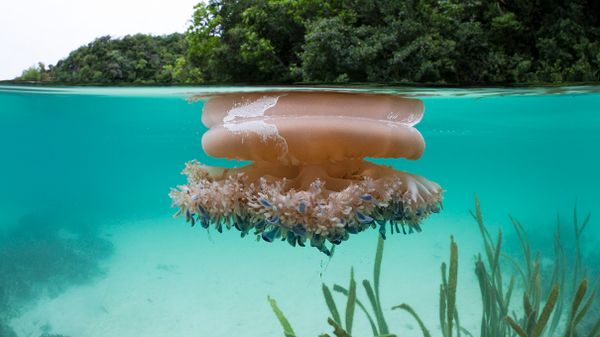
Key Takeaways
- Box jellyfish, belonging to the Cubozoa class, are the world's most venomous sea creatures with up to 15 tentacles containing 5,000 stinging cells that release a toxin causing rapid blood pressure spikes and heart failure.
- The Australian box jellyfish is particularly deadly, with its venom capable of causing excruciating pain, vomiting, headaches, anxiety and potentially death if left untreated.
- Box jellyfish actively hunt prey using their advanced nervous system and swim at speeds of 4 mph (6 km/h), mainly targeting shrimp and small fish in tropical and subtropical waters.
If sharks can have a week of their own, why not jellyfish — especially the hyper-venomous box jellyfish? Most jellyfish are more bothersome than threatening, which is probably why no one would tune into "Jellyfish Week."
Also known as sea wasps and marine stingers, box jellyfish belong to the Cubozoa class which includes 50 described species. A box jelly can have up to 15 tentacles with about 5,000 stinging cells, known as cnidocysts that it uses to kill prey.
Advertisement
Each of those cells contains a tiny capsule that can fire microscopic stingers into its prey at more than 37 miles (60 kilometers) per hour, releasing a toxin that causes a rapid spike in blood pressure, which makes the heart seize up and kills the victim.
